Bill Bodden's Blog - Posts Tagged "games"
Holiday Game Recommednations
First on the list is Zombie Dice from Steve Jackson Games. Talk about fast, stupid fun, Zombie Dice has the players pretending to be zombies and gathering brains. The brains are on the dice, which players roll three at a time to score that elusive grey matter. Watch out though; shotgun blasts will shut down a brain hunt very quickly! Number of players is flexible, and even a large group can play a game of Zombie Dice in under 20 minutes.
You probably wouldn't think a game about bean farming is what one might call fun, but you'd be wrong. Bohnanza is a card game where players try to score the most coins by harvesting beans at the right time. The trick to this game is that you must keep your bean cards in the order they were dealt. You only have two fields to work with, which means you have to get rid of the beans you don't want in order to find more of the beans you've already planted. Very fun and surprisingly strategic, Bohnanza is not a brain buster, but is a solid family card game for 2-7 players. Plays in about an hour.
Walk The Plank, from my friends and former co-workers at Green Ronin Publishing, is a basic trick-taking card game that's designed to force people out. You have to capture a trick to stay alive, and each hand sees the survivors receiving fewer cards until only one player is left. A game, even with a full crew, plays in five to ten minutes, so no one will be sitting idle for long. Everyone will want in on the next game to take revenge on the scurvy dogs what sent them to see Davy Jones! For 3-9 players.
ROFL, designed by my buddy John Kovalic, is a terrific party game that riffs on clever abbreviations used in texting. One player is the judge, and is the only one who doesn't know the phrase for that round. Players come up with the shortest abbreviation they can manage, and the player whose clue is guessed gets the points. Flexible number of players/teams; plays in about an hour.
Ingenious is a long-time favorite of mine, with colorful tiles that players try to match to score points. The trick to this game is to keep your lowest-scoring color higher than your opponent's lowest score. The description doesn't do the game justice: go out to Fantasy Flight Games' website and look at the box cover for yourself.
Lost Cities is a favorite of my wife and I. For only two players, this game has players deciding which archaeological digs to explore based on which cards one has. You must score more than twenty points' worth of cards for the dig to pay off; your opponent may be going for the same dig, so guard your secrets closely! Playing time is roughly 30 minutes per game.
One of my favorite big group games is Nanuk, another amusement by Steve Jackson Games. In Nanuk, the players take on the roles of Inuit hunters bragging about how successful tomorrow's hunt will be. When the bragging gets too outrageous, their bluff is called, and the hunt is on. Players win by collecting the most sets of animal cards (one each of deer, seal bird and fish cards) and by avoiding Nanuk, the Great White Bear. You need a larger group for this one; 5-8 players are needed, though play only runs roughly an hour.
Werewolves of Miller's Hollow is a variation on the classic convention game, Mafia. Players are assigned a secret role at the start of the game - either Werewolf or Villager - and must guess which other players are werewolves, then "execute" the most likely candidate before nightfall. At night, the werewolves come out and "eat" one of the villagers. Many players get knocked out of the game early, but it's still fun watching people try to pin the werewolves tail on someone else - especially if they really ARE the werewolf! For 8 to 18 players who have 30-60 minutes to kill.
Recently highlighted on the YouTube series TableTop was Unspeakable Words. In this classic word game, two to six players must create words using the letter cards in hand. Then the player must roll equal to or higher than the score of the words on a twenty-sided die as a "sanity check". If you fail, you lose one of your five Cthulhu tokens. The first player who stays sane and scores 100 or more points wins.
In Pandemic, players take on one of six roles at the CDC and attempt to control outbreaks of various infectious diseases. Each role has it's own superpower, and the object is to find cures for all four diseases before you run out of cards. Plays in about an hour. For two to four players who can work together.
So where, you ask, can one find these gems of entertainment? Try your favorite local game store. Mine just happens to be Pegasus Games in Madison Wisconsin (see the link under the sidebar "Bill's Friends" on the right-hand side of the page), but there are lots of good stores throughout the country, and pretty much all of them could get these for you if they don't have them on hand.
Happy Holidays!
Bill
Crushing Hopes and Dreams
Aaron himself has a number of designs to his credit, including co-creating the Let’s Kill card game, published by Atlas Games, and extensive work on the Shadowrun universe for Catalyst Game Labs, and even some work on a support book for the Leverage RPG for Margaret Weis Productions.
When I arrived at the school prior to my first judging session at 10 AM, I had to speak into an intercom to be let into the building. After signing in, I was given a sticky badge with “VISITOR” marked on it, and a student was sent to escort me to the classroom. After the morning’s announcements, the students split up into their teams, all ready to demo their games for me and several other judges. I have to say I was impressed; the amount of thought and planning that went into most of the games was laudable, and several of the designs I would be more than willing to play again. A few needed tweaks here and there, and none of them were actively bad. I found out later that each group was assigned a random theme to give them somewhere to start; I think this helped tremendously, though some students seemed less than thrilled with the subjects with which they were saddled.
A stack of blank judging sheets was provided for me to fill out, and while I didn’t actually savage anyone, I was as honest as I could be about any major flaws we discovered. One or two designs were more complex than was strictly needed, which may have had more to do with the judging criteria than with the idea behind the design. Chance was a major factor in most designs — not a flaw, but certainly an unpredictable element. When coupled nicely with strategy, chance can be a delight; when left to its own devices, chance is more likely to bite players in the ass, so I like games that work at blending the two elements.
Class two was two hours later, so Aaron treated me to lunch from the cafeteria – which was delicious, by the way — and we went back to the classroom to eat, enjoying a quick game of Dominion while we talked and munched on our tacos.
In a couple of the groups, it seemed that one or two people had done most or all of the work; they knew the rules and could explain quirks easily, while other team members deferred to them on nearly every question. This wasn’t always the case, but I found myself spending nearly as much time analyzing group dynamics as I did judging their designs.
If I was disappointed in anything during the experience, it was that there weren’t many women in the class — two in the first session, one in the second — out of roughly two dozen students in each. Game design is not a guys-only thing, but in my admittedly unscientific observations, guys seem to be more interested in exploring games at that age.
I had a great time, and want to thank Aaron Pavao and his classes at Waunakee High School for having me as their guest judge. Even if the students decide that game design is not for them, I hope they continue to enjoy games as a hobby throughout their lives.
Crushing Hopes and Dreams -- AGAIN!
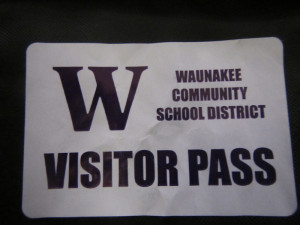
This year, I was able to judge both sections of students: each group had four teams (called "guilds") that worked to design a game. The most common type of creation was a basic board game, some with truly creative themes and design techniques. Each group had fifteen minutes to describe to me how the game worked and play a few turns to give me the idea. I had a tally sheet for each group, with tick boxes to keep track of hitting various basic design goals, and a smaller section for my thoughts. I rarely had enough time to perform a detailed break-down of the game, so I had to resort to encouraging quips to (hopefully) inspire the students to keep at it.
There was a two-hour break between classes, and since Aaron didn't have anything pending to do in-between, he and I went to Sushi Muramoto and gorged on delicious sushi for lunch, Aaron's treat. I had the chef's choice special, consisting of three rolls: salmon, avocado, and spicy tuna. All very safe, but also, all very tasty and satisfying. Then it was back to school for the afternoon class, and another four games to try.
This year, most of the groups seemed to have genuinely been collaborative efforts. While one or two students did most of the talking to me, nearly everyone seemed very familiar with their guild's game and how it worked. Some groups were better than others at getting the rules down on paper in a clear, concise format, but I was pleased to note that, while not every game was to my particular taste, there wasn't one game I thought was poorly designed, and most I would be happy to play again.
Still disappointing is the relatively few women involved in the class -- maybe three total out of two classes and over 30 students. Game design isn't strictly for boys, after all, and there are quite a few talented, clever women actively involved in game design professionally right now. I hope to see more women take an interest in game design in future classes.
I always enjoy my time working with Aaron's classes. The students want to be there and are interested in the subject, and even though they really have no idea who I am (Aaron did gibe them a brief summary of my career in the industry) they seem interested in hearing opinions on their designs. If this is a career -- or even a hobby -- that they choose to pursue in the future, they certainly will have plenty more opinions to look forward to.
Be sure to check out my other blog posts at http://billbodden.com/!
Summer Game Recommendations
For the rest of this blog entry, please visit:
http://billbodden.com/2016/05/23/summ...
Screw You, Pikachu!

Yeah, I realized I missed posting last week. Truth is, I've been obsessed with something lately -- to the point where I've stopped thinking about much else.
Back in June, my "friends" Matt McElroy and Monica Valentinelli were trying to convince me that I should give Pokemon Go! a try. They were having fun with it, and could use a third player to join them for raids and Gym battles. As they showed me how the game worked in real time, I became intrigued. I was familiar with the TV series and the collectible card game, so I knew roughly what I was getting into...
To read the rest of this post, please visit http://billbodden.com/2017/07/24/scre...
Front Lines of the War On Christmas
One of my least favorite things about working in retail during the holiday season is the non-gamers who ask "What's the hot new game this year?" Speaking from more than 25 years working in that very same retail gaming establishment, I can tell you that...
To read the rest of this post, please visit http://billbodden.com/2017/12/18/fron...
New Book is Out!
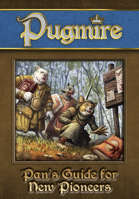
A book I worked on extensively last year, Pan's Guide for New Pioneers , has finally been finished. Print copies exist (I've held one in my hands!) and are making their way to stores in the next few weeks. Be sure to stop by your friendly, local game store soon and ask for a copy!
Pan's Guide is a combination quick start and adventure, meant to appeal to players who are new to the game. It includes a multi-part adventure, a nice selection of pre-generated characters, and the basic rules of the game to get people playing as quickly as possible. Part D&D adventure, part homage to Thundarr the Barbarian, and part tribute to the Walter Miller novel A Canticle for Libeowitz, Pugmire's action...
To read more of this post, please visit: http://billbodden.com/2018/07/23/new-...
I Picked the Wrong Week to Be Optimistic
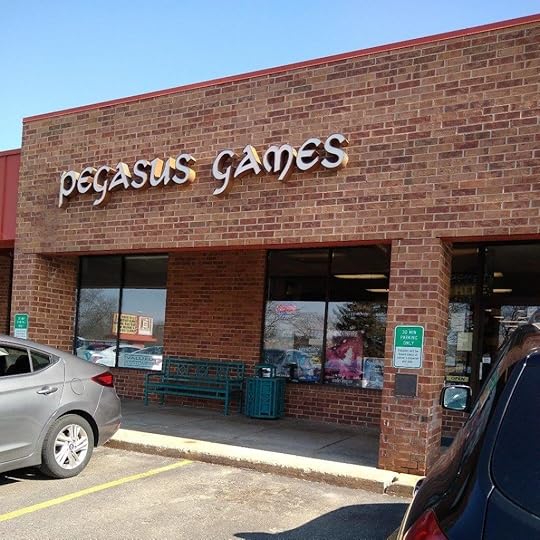 Goodbye old friend
Goodbye old friend
Then on Wednesday, I got an early morning...
http://billbodden.com/2019/10/28/i-pi...
Cards Against Humanity: Punching Down
The Cards Against Humanity party game has been in the news recently, both for an allegedly toxic work environment and a co-founder who was a bit of a loose cannon. The articles are beginning to appear now, decrying this game that we are all embarrassed to love, but in fact, I hated the game the first time I played it.
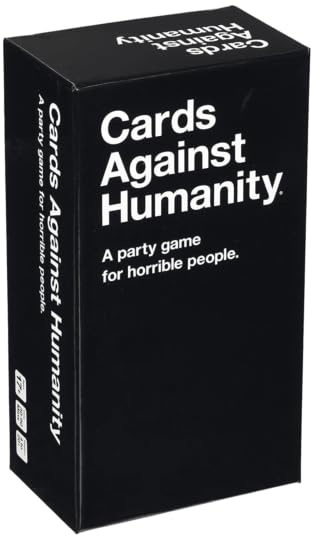
See, this was a game that was, at it's heart, all about punching down. It made sport of people who were different from classic WASPs, typically minorities and at-risk populations, and I found it annoying at best, and, well, there was worse. But it was considered "edgy" and "challenged stereotypes." To me, it was an excuse to say things you normally couldn't get away with - an adult way to act naughty. And honestly, the only thing it really challenged...
To read the rest of this post, please visit: http://billbodden.com/2020/06/30/card...
A Geeky Holiday
Today, July 27, happens to be a monumental day in the geeky calendar. July 27 is the birthday of Gary Gygax, who would have been 82 today. It may seem a bit random - or possibly overblown - to delebrate the creator of a game, but let me explain why this is so important to me and many others.
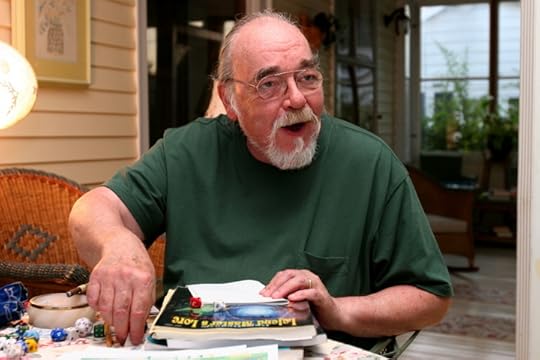 Gary Gygax
Gary Gygax
First, there's Dungeons and Dragons. Gary, along with Dave Arneson, created Dungeons & Dragons many years ago, finally codifying things and bringing a version to market in 1974. I discovered it later, after a more consumer-friendly version was published. I bought this version - against my parents' wishes - in 1977. The box looked like...
To read the rest of this post, please visit: http://billbodden.com/2020/07/27/a-ge...



